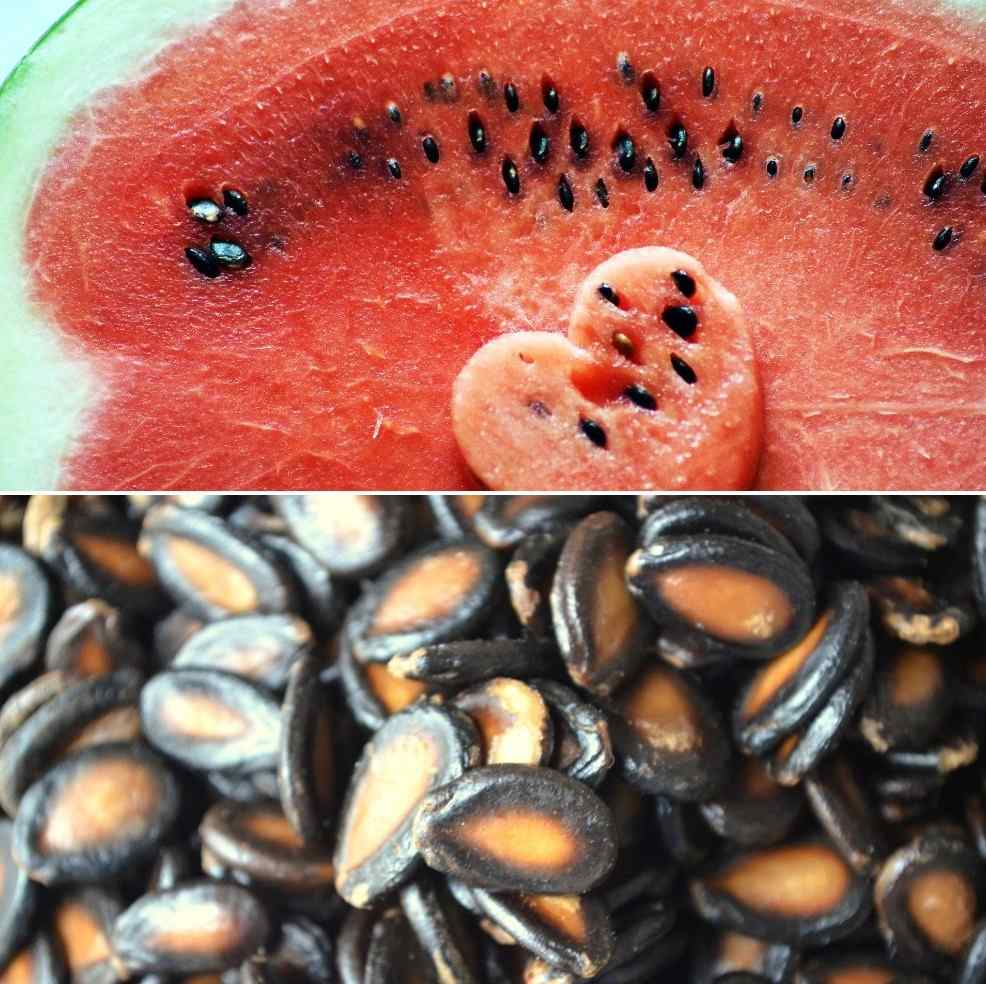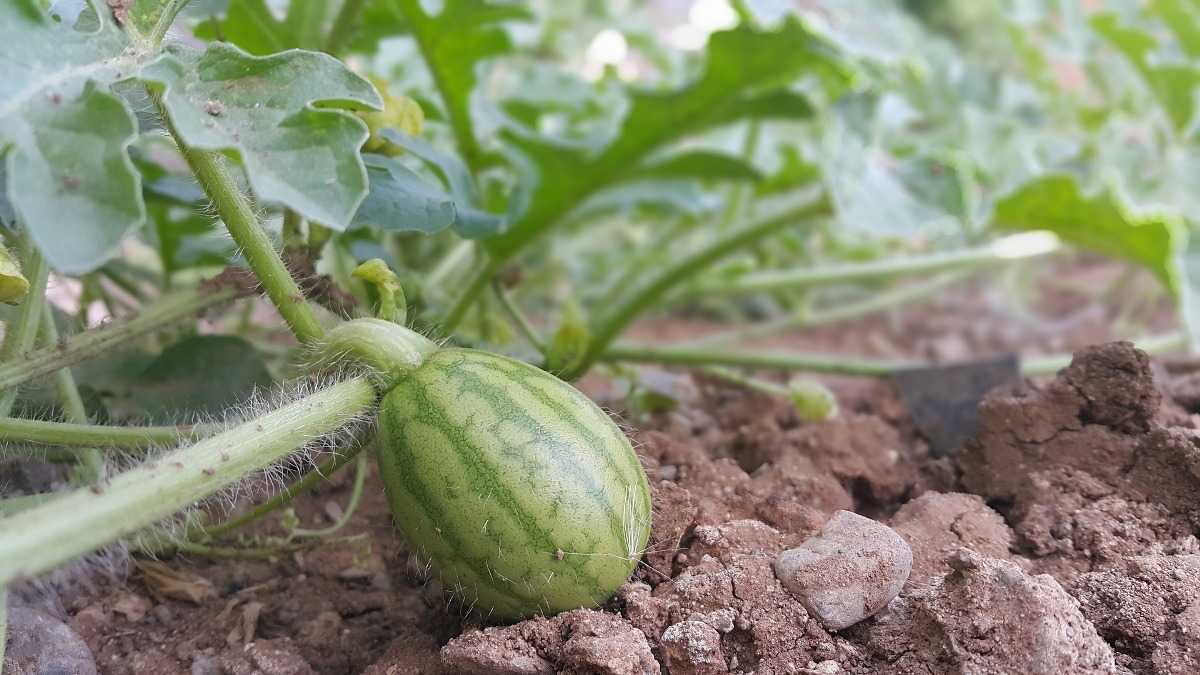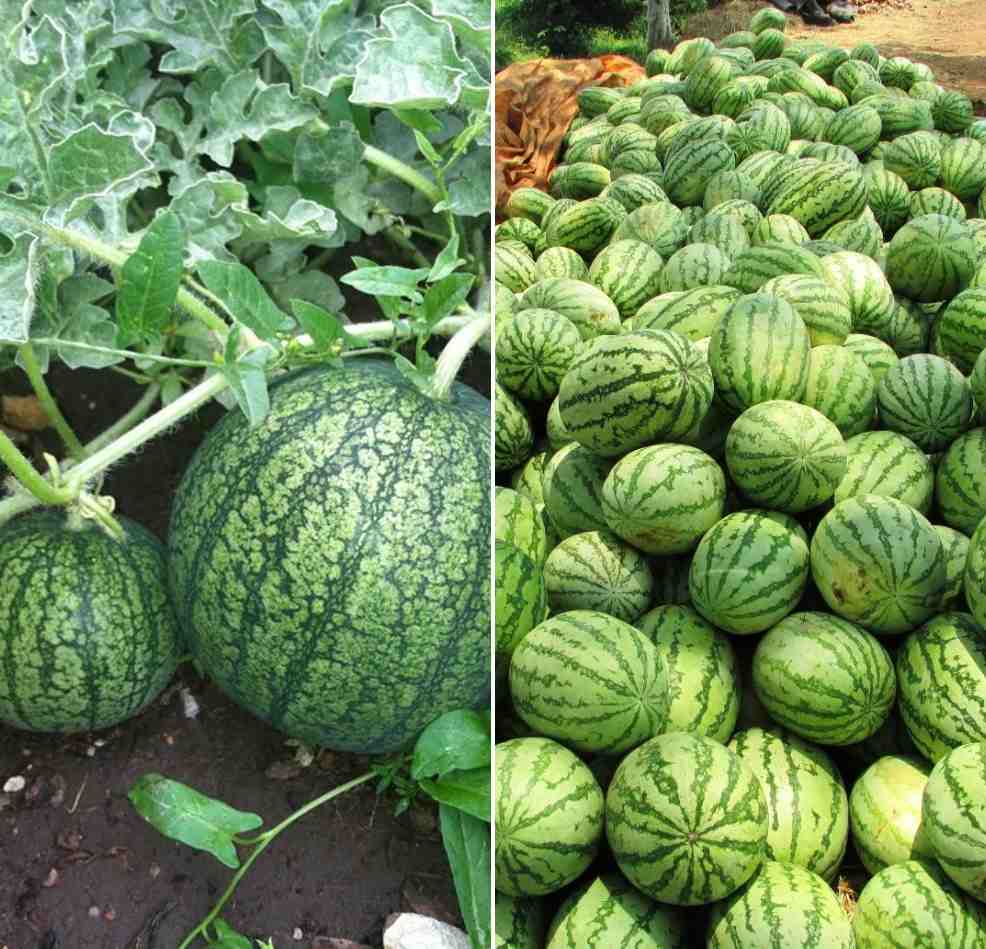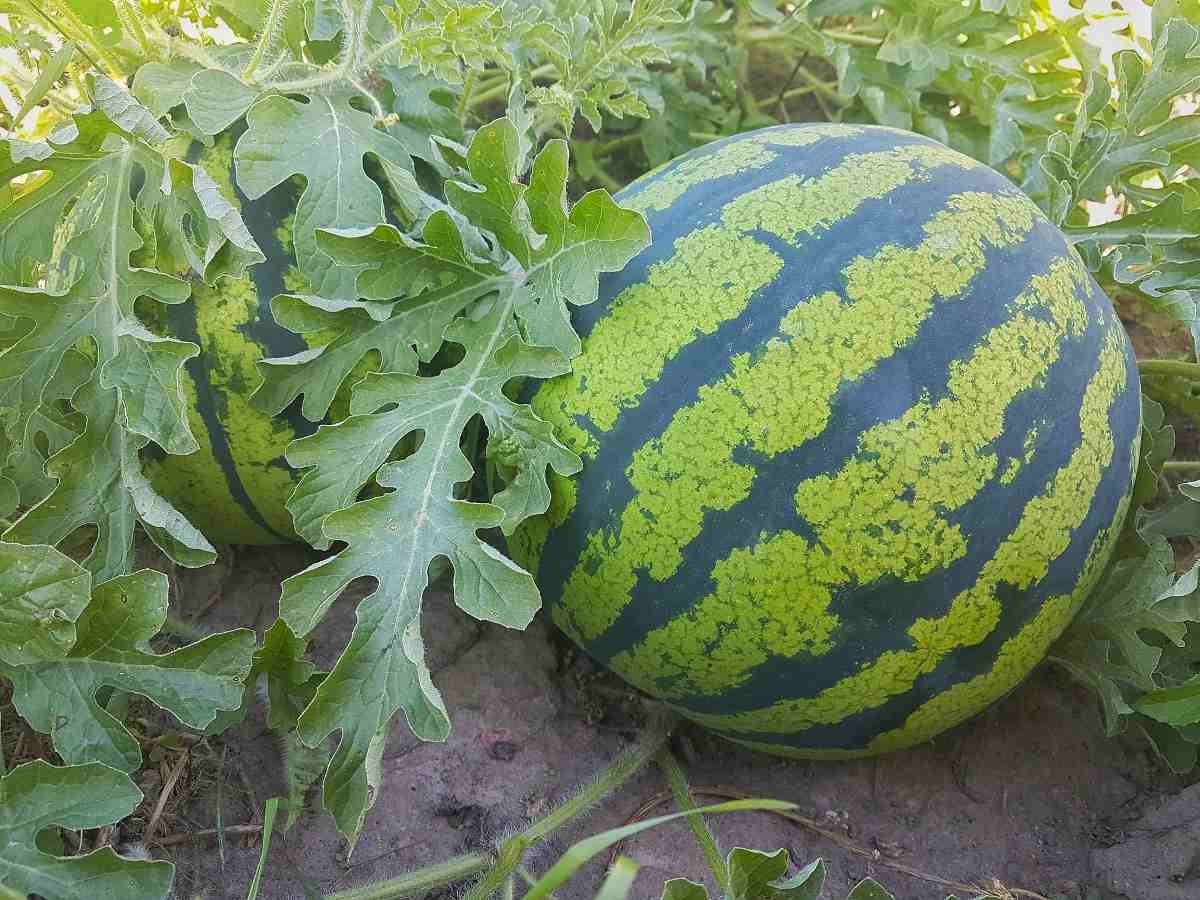Introduction to Watermelon seed germination process
Botanically Watermelon is called Citrullus lanatus and it belongs to family Cucurbitaceae. It is a warm-season crop and can be grown year-round in the tropics. By selecting suitable varieties and giving them proper care, good quality of Watermelons can be formed in the tropics. Watermelon plants grow best in a warm climate with a long growing season and depending on the variety, they require 70 to 90 days to produce mature fruit. In this article we also discussed below topics;
- How long do Watermelon seeds take to sprout
- How to plant Watermelon seeds
- What month is the best time to plant Watermelon
- Watermelon harvest time
- How do you germinate Watermelon seeds
- Watermelon seed germination temperature
- How long does Watermelon seed take to germinate
- Process for germinating Watermelon seeds
- Watermelon climate requirements
- Watermelon seed germination period
A step by step guide to Watermelon seed germination
Watermelon not only tolerates hot weather but for best plant growth requires more heat than any other vegetables. Watermelon seeds germinate well and plants thrive at 25 to 30°C. Fruits mature best at about 30°C. It requires dry weather and plenty of sunshine. Continuous rain or cloudy will not only stunt the plant growth but reduce the flowering and fruit set. If Watermelons mature in the rainy season, the sugar content will be reduced.

Watermelons do best when grown on sandy soil or well-drained sandy loam soils. Poorly drained soils must be avoided. Watermelon must not be grown on the same soil year after year because of disease problems. It is best to wait 3 years before planting Watermelons on the same ground.
Different Watermelon varieties
The different Watermelon varieties are given below;
Kiran – Extra early, elongated dark green fruit with indistinct dark stripes. The deep red flesh is tender and succulent; sugar content is around 12 to 14%. The fruit weighs between 2.5 and 3.5 kg. 102 days requires form seed sowing.
Vishala – The attractions of variety are its beautiful golden-yellow rind and the uniform oblong shape.
Saraswati – Extra early, vigorous, and sets fruit well. The fruit is short oblong, uniform, and weighs around 3 to 4 kg. The flesh is deep red, delicious, with sugar content around 12 to 14%.
Mithila – Fruit is slightly round, weighing 3 to 5 kg. Sugar content is around 11%. The yellow flesh is sweet and juicy.
Priya – Fruit is oblong-shaped fruit with deep green rind and broad dark stripes. It is ready to harvest about 80-85 days after sowing. Ships and stores well.
Popular varieties with their yield
Improved Shipper – Fruits are large size, skin color is dark green and these are moderately sweet with 8-9%.the average yield is 70-80 quintal per acre.
Sugar Baby – It gives an average yield of 72quintal/acre. It has dark red color skin and contains 9 to 10% sucrose content.
Other state varieties are;
Yuvaraj, Aayesha, Varun, Madhubala, Chetan, NS 295, NS 34, NS 450, Arjun, KSP 1081, Lalima and Raja.
Seed selection for Watermelon farming
Seed selection in Watermelon farming plays the main role in getting proper yield and quality of the fruit. It is recommended to choose the best quality seeds to raise the healthy seedlings of Watermelon.
- The Watermelon seed must belong to the proper improved high yielding variety
- The seed should be fully mature, well developed and plump in size
- The Watermelon seed must be free from signs of age or bad storage
- The seed should clean and free from mixtures of other seeds
- The seed should have a high germinating capacity for getting higher yields.
Before sowing the Watermelon seeds in the field, they must be treated with fungicides to protect the seeds from soil-borne fungal diseases and also to give a boost to the seedlings of Watermelon.
Tips to germinate Watermelon seeds
The Watermelon growth stages are germination, vining, flowering, and fruiting.
Only use fresh seeds
Watermelon seeds rank as one of the easiest seeds to collect and also save from ripe fruit. Simply scoop the seeds out of a Watermelon, and rinse them under water to remove any fruit pieces or fruit juices, and let them air-dry on a paper towel. In general, seeds stay viable for approximately four years. Though, the longer you wait, the lower your chances of optimal germination. For the best results, plant seeds as soon as you harvest them. When buying commercial packets of Watermelon seeds, check the expiration date to ensure the four-year limit hasn’t passed.
Avoid soaking the seeds
Many types of plant seeds benefit from pre-planting soaking to the outer seed coating and hasten germination. Though, Watermelons are an exception to the rule. Soaking the Watermelon seeds before planting increases the risks of various fungal diseases, such as anthracnose caused by the Colletotrichum lagenarium fungus.
Don’t plant too deep
Watermelon seeds that are planted too deep will fail to get established properly. For optimal seed germination, bury Watermelon seeds at a depth between 1/2 and 1 inch.
Watermelon seed spacing
General guidelines for common varieties of watermelon are to plant 3 seeds 1 inch deep in hills that are spaced 4 feet apart, and allowing 6 feet between rows. Sow 6 to 8 seeds per hill, later thinning to 3–4 plants per hill. Sow Watermelon seeds about ½-inch deep. Water seeds into the hills after planting.
Watermelon seed germination time and temperature
Watermelon seeds will germinate in 4–12 days.
The warmer the soil, the faster seeds germinate. For example, it takes approximately 3 days for a Watermelon seed to germinate in 32°C conditions and approximately 10 days when temperatures are at 21°C. If starting Watermelon seeds indoors, consider using a space heater or heating pad to increase temperatures. If growing the Watermelon seeds outdoors, try laying black plastic mulch over the planting site to help absorb the sun’s heat and increase soil temperatures during the day, and in turn, speed up Watermelon germination.
In case if you miss this: Hydroponic Drip System, Types, Advantages.
Seed sowing methods in Watermelon
Direct Sowing
The easiest method to start Watermelon seeds is direct sowing. However, for seedlings to grow, you require the proper conditions. Wait until the soil temperature rises above 21°C to plant seeds. Plant Watermelon seeds 6 feet apart in rows that are 6 feet apart to allow Watermelon vines plenty of space to grow. Water well after seed sowing, or plant before an expected rain. Add 10-10-10 fertilizer and lightly work it into the soil with a rake to feed seedlings as soon as the seed germinates.

Watermelon plants are a tender, warm-weather crop. Sow Watermelon seed or set plants directly in the garden in spring 2 weeks after all danger of frost has passed after the soil has warmed to 21°C. Watermelon seed can be started indoors about 8 to 6 weeks before plants are set out. For the sweetest flavor, Watermelons need a long, hot growing season; Watermelon vines require 10 to 15 feet of grow room. Watermelons mature 70 to 100 frost-free days after sowing seed depending on the variety.
Early Sowing
Watermelons can be directly sown outdoors before conditions reach the required levels. Lay black plastic over the Watermelon bed 2 weeks before planting to warm the soil. Cut holes in the plastic to plant seeds about 6 feet apart in rows 6 feet apart. Sow the Watermelon seeds and water well. Once the soil temperature range reaches 21°C in the rest of the garden, remove black plastic to prevent the soil from getting too hot.
The seed rate and seed treatment of Watermelon
For sowing one-acre land, a seed rate of about 1.5 to 2 kg is required.
Before sowing treat seed with Carbendazim by 2gm/kg of seeds. After chemical treat seeds with Trichoderma viride by 4gm per kg of seeds. Dry seeds in shade and then do seed sowing immediately.
The seed germination process of Watermelon
Germination is often thought of as the whole procedure from sowing until the full emergence of the two cotyledon leaves. There are, in fact, two vastly different phases during this period, namely germination and growth of the radicle and hypocotyls until emergence.
Germination is a complex physiological procedure with photo-dependency, initiated by water absorption during a period of optimum temperatures. When these three criteria are met, seed dormancy is lifted and the radicle emerges, signaling the end of the seed germination process.
The size of a seed is a good indication of its optimum seed sowing depth. A good rule of thumb is to sow at a depth of 4 times the seed width.
The Watermelon seed absorbs water for its metabolic processes, embryo expansion, and radicle and hypocotyl growth. Because of its size, Watermelon seed requires more water during the initial stages of seed germination than smaller seed varieties do. If seed germination takes place at a relative humidity of 90%, no additional water is required during the first 3 days after sowing.
Over-watering, particularly during cooler periods, will result in a lowered respiration rate and less energy production. Using the water disinfectant Spore kill and incorporating the bio-inoculants. Trichoderma into the seedling growth medium limits the damage mainly caused by these pathogens. The optimal temperature range for successful and uniform germination is a constant 23 to 25°C for the first three days after sowing.
Irrigation for Watermelon growing
As the Watermelon plant grows, irrigation is done every week. Attention should be paid to water stress at the time of irrigation since it can lead to fruit cracking. While irrigating, water should be restricted to the root zone of the plant. Wetting of vines or other vegetative parts should be avoided especially during flowering or fruiting time as wetting can lead to withering away of the flowers, fruits, or even the plant as a whole. Also, wetting of the vegetative parts can lead to the development of fungal diseases. Moisture should be maintained near the roots so that the plants develop a taproot system. As the fruits near maturity, irrigation frequency is reduced and it is stopped during the harvesting stage. Then, this helps in developing flavor and sweetness in the fruit.
When and how to harvest Watermelon

Harvested Watermelons.When harvesting Watermelon, cut the stem by using a sharp knife or garden tool rather than pulling the plant from the vine. Maturity indicators differ among varieties but include the ground spot turning yellow, the tendril opposite the fruit shriveling, or rind taking on a dull and waxy appearance. Watermelons are ripe when they sound taut and hollow to tap from the knuckle.
The Watermelon crop will become ready for harvesting in 80 to 100 days after sowing depending on the variety (cultivar) and season. Normally, the maturity of Watermelon can be judged from withering of the tendril, ground spots to yellow and thumping test, or change in belly color. The Watermelon fruits must be separated from the vines with the help of a sharp knife.
You may also check this: Post Harvesting Technology of Fruits for Dummies.
Watermelon seed storage
Watermelon seed will last 3 to 4 years when kept dry (10 – 15% seed moisture content), and cool, constant temperature (14 – 20°C). Seed packaging opened too long before sowing seed, and frequent and rough handling will lower Watermelon seed viability.
The yield of Watermelon fruits
The Watermelon crop yield depends on many factors like variety, soil type, climate, and farm management practices.
The average Watermelon fruit yield varies from 20 to 30 tonnes/hectare.
Commonly asked questions about Watermelon seed germination or farming
You should not miss this: Basic Steps of Organic Farming, Organic Farming Types.

The difference between seeded and seedless Watermelon?
The difference between the two is that while traditional, seeded Watermelon has hard black seeds, seedless Watermelon has been bred to produce soft and pliant edible seeds.
How many Watermelons do you get per plant?
Healthy Watermelon vines produce 2 to 4 fruits per plant.
Which is better seedless or seeded Watermelon?
Because it has more genes, a seedless Watermelon sweet flavor is expressed more, so the fruit is more likely to be more flavorful than a seeded Watermelon.
Why is my Watermelon not growing?
Watermelon plants may grow slowly if you plant them in the wrong soil. Heavy soils are the worst for growing Watermelons because the resulting plants will make flavorless melons and vines that grow slowly. The best soil for rapid plant growth and flavorful fruit is sandy loam.
Why are my Watermelon vines wilting?
If Watermelon vines are wilting, this might indicate that there’s a fungal problem coming from the soil. Fusarium wilt of Watermelon causes plants to wilt, and it can begin in one or more vines. Pull out a plant and look for any browning or discoloration at the base or on the plant roots.
What is the best fertilizer for Watermelon?
When fertilizing Watermelon plants, then use nitrogen-based fertilizer at the onset. Once the Watermelon plant begins flowering, however, switch to feeding the Watermelon phosphorus and potassium-based fertilizer. Watermelons need ample potassium and phosphorus for optimal melon production.
Why won’t my Watermelon seeds sprout?
Direct sow Watermelons in the garden in spring after all danger of frost has passed and the soil has warmed to 21°C. Watermelon seeds will not germinate at a soil temperature below 18°C. Sow seed ½ inch deep and seeds germinate in 3 to 10 days at 27°C or warmer.
Why are my Watermelon seedlings dying?
The lower part of the stem becomes waterlogged and girdled near the soil line. If pulled out the ground, the roots will be discolored and stunted. These types of problems can be directly traced to Pythium, a family of fungi that lives in the soil.
Why do my Watermelons keep rotting?
Blossom rot in Watermelons is caused by a lack of calcium, but adding more calcium isn’t going to help the situation. More often than not, Watermelon blossom end rot occurs when the water levels are fluctuating during fruit initiation.
Can you use Watermelon seeds to grow Watermelon?
You can save the seeds from Watermelon to grow more plants, but you’ll have to wait until next spring to plant them. If you save the Watermelon seeds from a grocery store melon, you might be surprised at the variety of fruit you produce.
How long do Watermelon plants live?
About 2 to 4 melons can be obtained per plant in its single lifespan of 3 to 4 months. Generally, gardeners purposely keep only one Watermelon per plant to harvest big sized fruits.
In case if you are interested in this: Profits from Chikki Making Business.
I have a question. What causes watermelon seed to start germinating inside watermelon still growing that hasn’t ripped fully